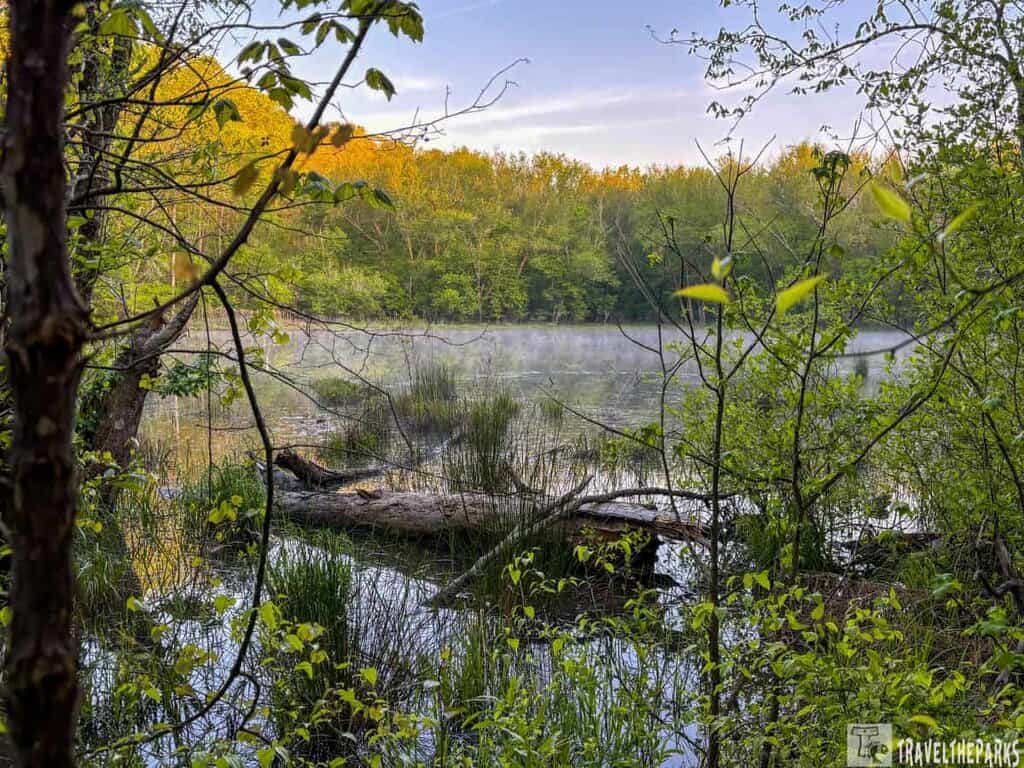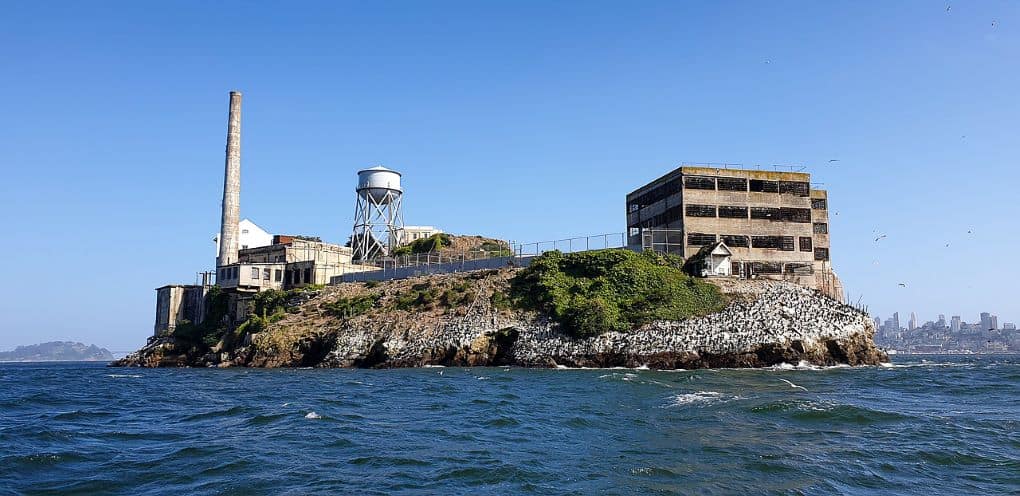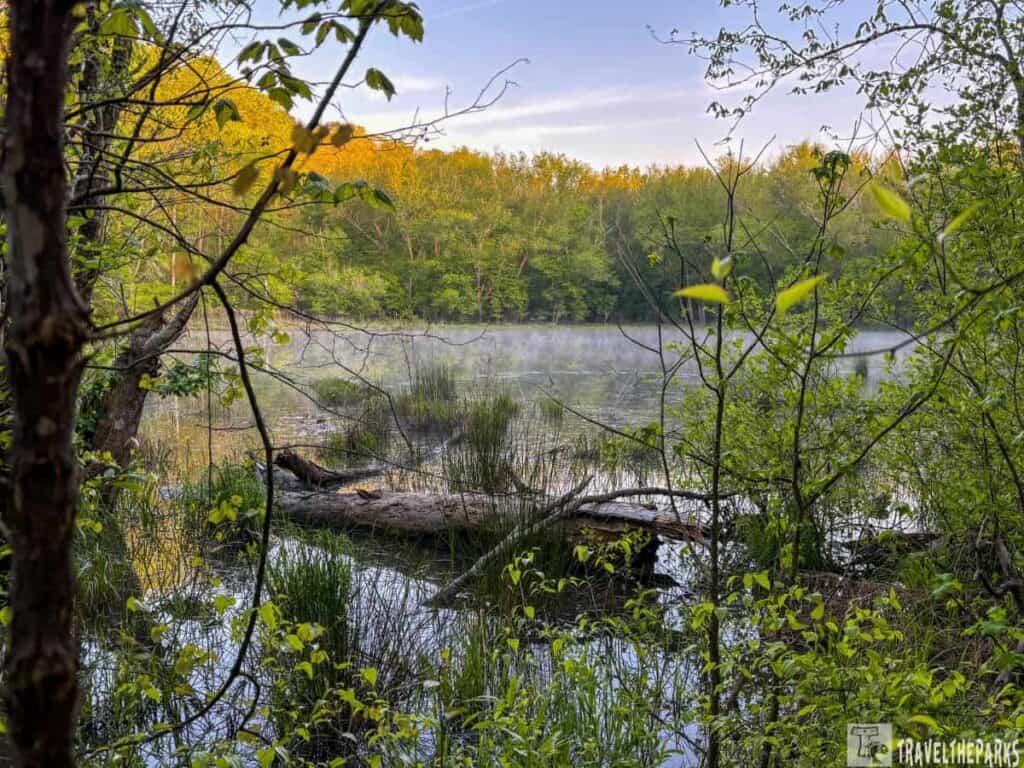From Atlanta’s civil rights landmarks to Cumberland Island’s wild horses, Georgia’s National Park Sites (NPS) offer a tapestry of stories and landscapes. We recently tackled this road trip in our RV, camping under starry skies and uncovering the state’s most iconic destinations. Whether you’re a history buff, nature lover, or road trip warrior, here’s your guide to exploring all seven NPS sites in Georgia—plus tips for RV-friendly camping along the way!
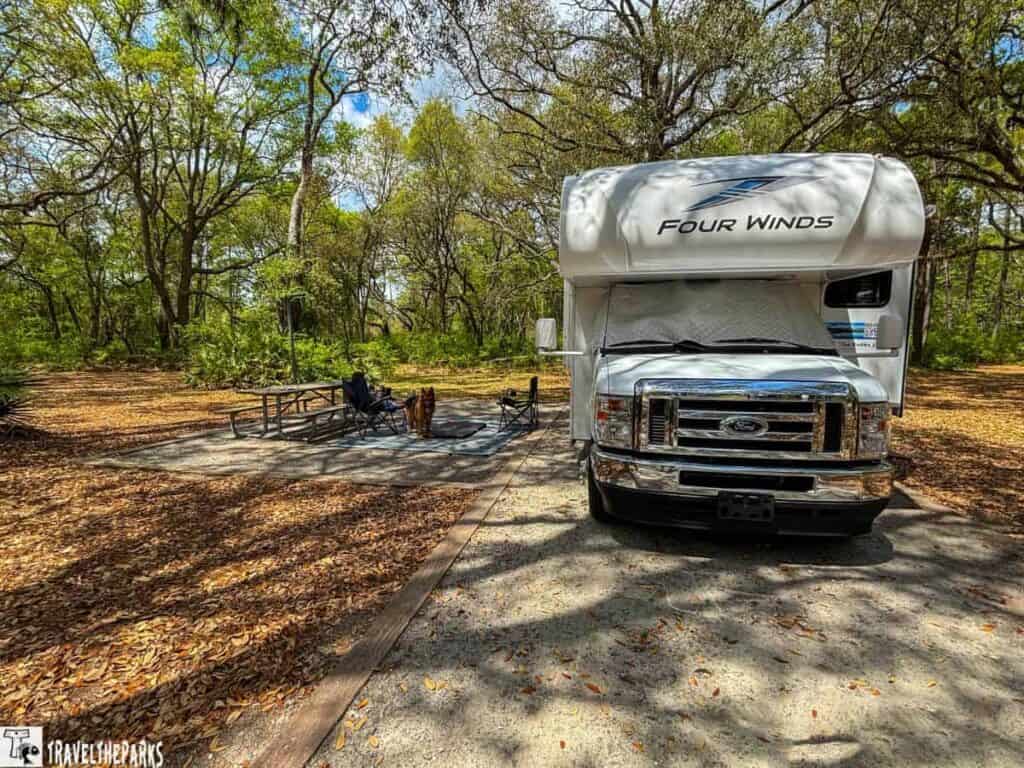
Georgia may be known for peaches and southern charm, but it also boasts 11 National Park Service (NPS) units that showcase its rich history, scenic landscapes, and cultural significance. We hit the road in our RV motorhome to explore them all—camping, hiking, paddling, and soaking up the stories that shaped this beautiful state.
This post may contain affiliate links, meaning if you purchase something through one of these links, we may earn a small commission at no extra cost to you! Read the full disclosure policy here.
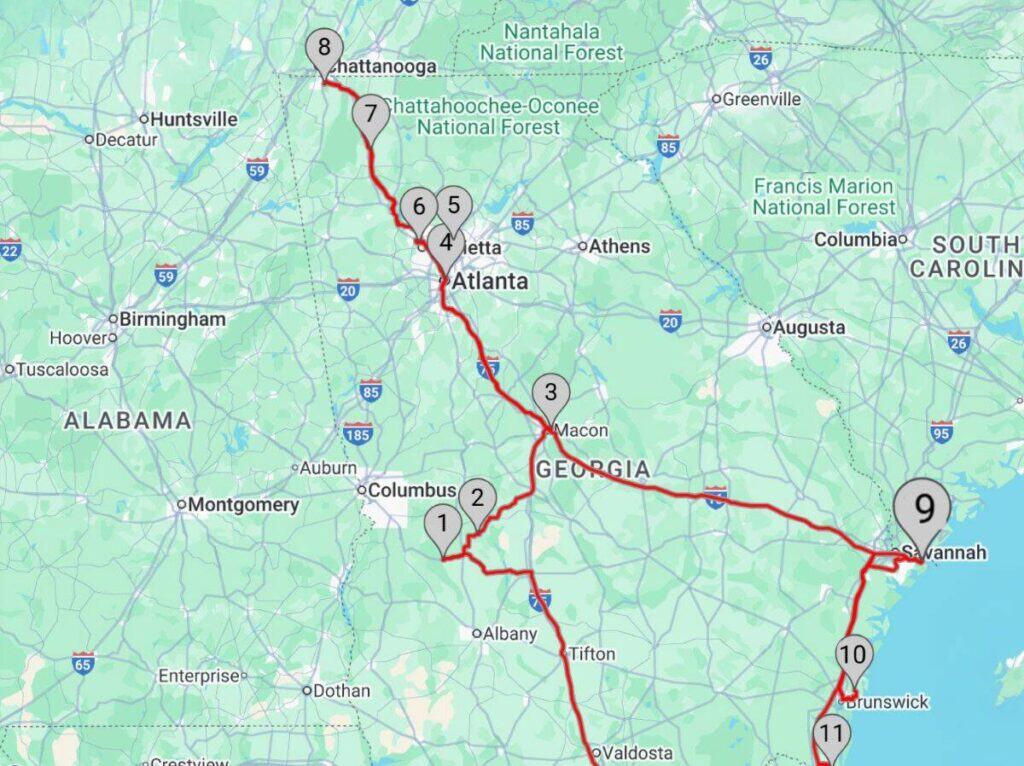
Table of Contents
Why This Georgia Road Trip Should Be on Your Bucket List
Georgia’s national park sites capture the heart of the South, from historic Civil War battlefields to pristine barrier islands. Traveling by RV allowed us to truly connect with the state. Whether it was grilling under moss-draped oaks or waking up to the ocean breeze on Cumberland Island.
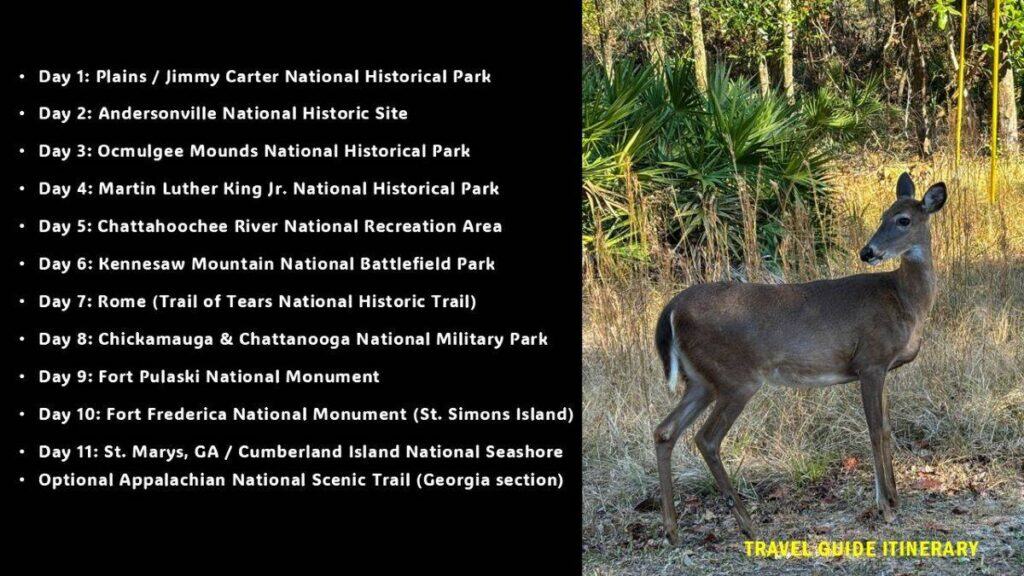
Explore all seven of Georgia’s NPS attractions in one unforgettable road trip. RV camping out under the stars, uncovering Civil War history, and spotting wild horses on Cumberland Island. This is your ultimate guide to must-see stops, not to be missed experiences, and top-notch camping spots across the Peach State.
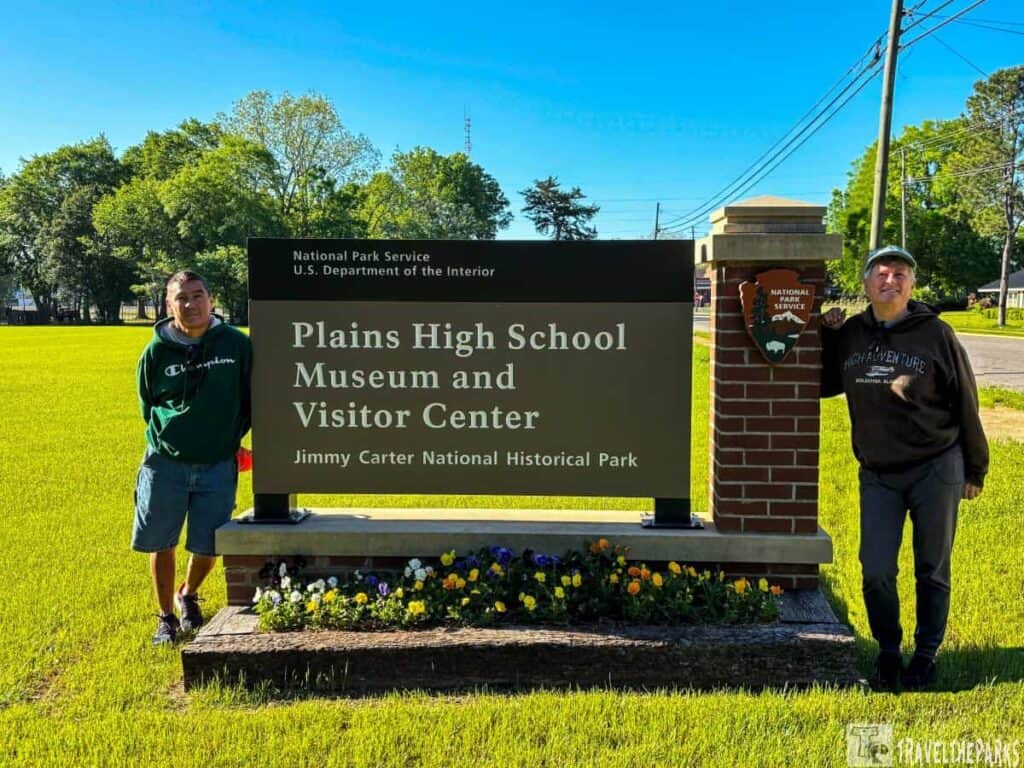
Day 1: Jimmy Carter National Historical Park – Plains, GA
The Jimmy Carter National Historical Park at Plains, Georgia, honors the life and service of Jimmy Carter, the 39th President of the United States. The park in Carter’s hometown preserves important sites. His life reflects a journey from humble beginnings through the presidency, and into a lasting legacy of public service and humanitarian work dedicated to helping others.
Need to Know: Discover the life and legacy of the 39th U.S. president in the town where he grew up. No entrance fees. Plains High School Visitor Center: Open daily 10 AM to 4 PM (check NPS site for updates). The 1930s Boyhood Farm is open year-round from 10 AM to 5 PM, except on federal holidays—Thanksgiving, Christmas Day, and New Year’s Day.
Interesting fact: Carter won the Nobel Peace Prize in 2002 for his humanitarian work.

Things to Do:
Explore President Carter’s childhood farm. Check out the Plains High School Museum and take a picture with its famous peanut statue. In the small historic downtown district, walk to the nearby train depot, which was the campaign headquarters. Be sure to watch the short film inside the depot. Grab a bite at the Buffalo Cafe, where the locals go. Afterwards, shop at the Plains Peanut Store for some peanut butter ice cream. If you’re looking for that nostalgic Mayberry feel, make sure to stop by the Billy Carter Gas Station Museum—a quirky, charming slice of Americana that celebrates the down-home spirit of a small Southern town.
Where We Camped:
We camped at Andersonville RV Park (about 35 minutes away). Plains, Georgia, RV Park is the closest with full hookups (reviews are a bit sketchy). There is also the Americus KOA Journey with plenty of amenities.
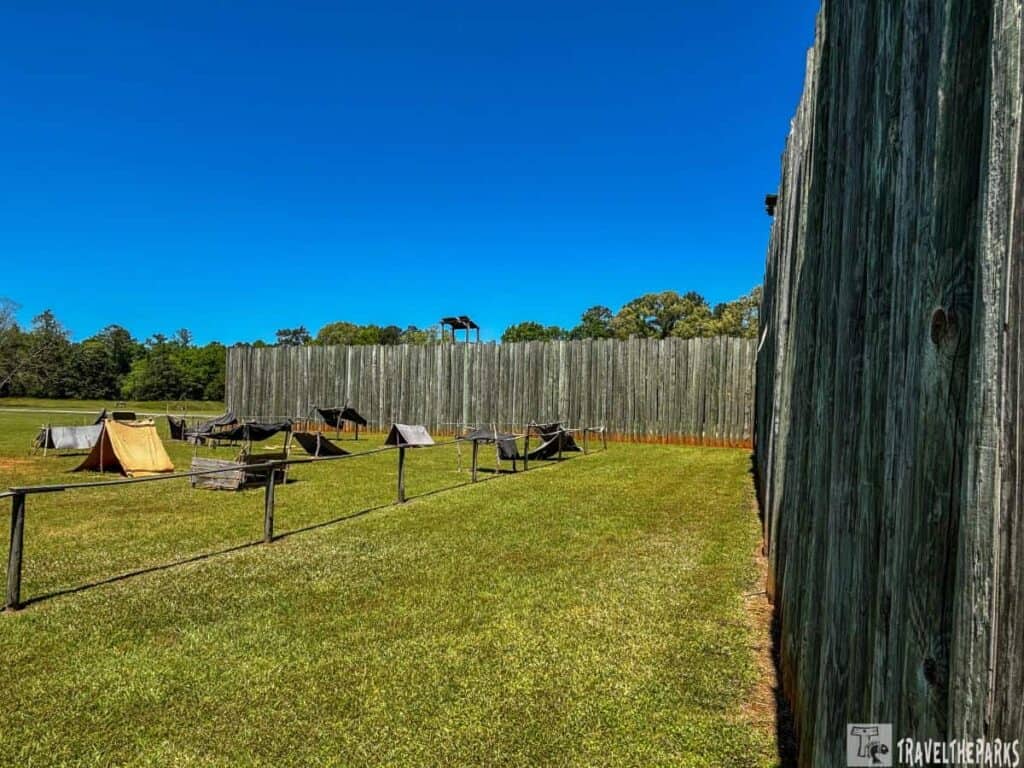
Day 2: Andersonville National Historic Site—Andersonville, GA
Andersonville National Historic Site protects the location of Camp Sumter. It was one of the biggest camps for Confederate prisoners during the American Civil War. Near Andersonville, Georgia, the site serves as a serious reminder of the struggles faced by almost 45000 Union soldiers who were held as prisoners there in 1864.
Need to Know: A dignified place preserves historic Camp Sumter. It was the largest of the existing Confederate prisoner-of-war camps employed during the Civil War. No entrance fees. Park Grounds & Historic Prison Site are open daily: 8:00 AM to 5:00 PM. The National Prisoner of War Museum & Visitor Center is open daily: 9:30 AM to 4:30 PM. Andersonville National Cemetery is open daily: 8:00 AM to 5:00 PM. All sites are closed on Thanksgiving Day, Christmas Day, and New Year’s Day.
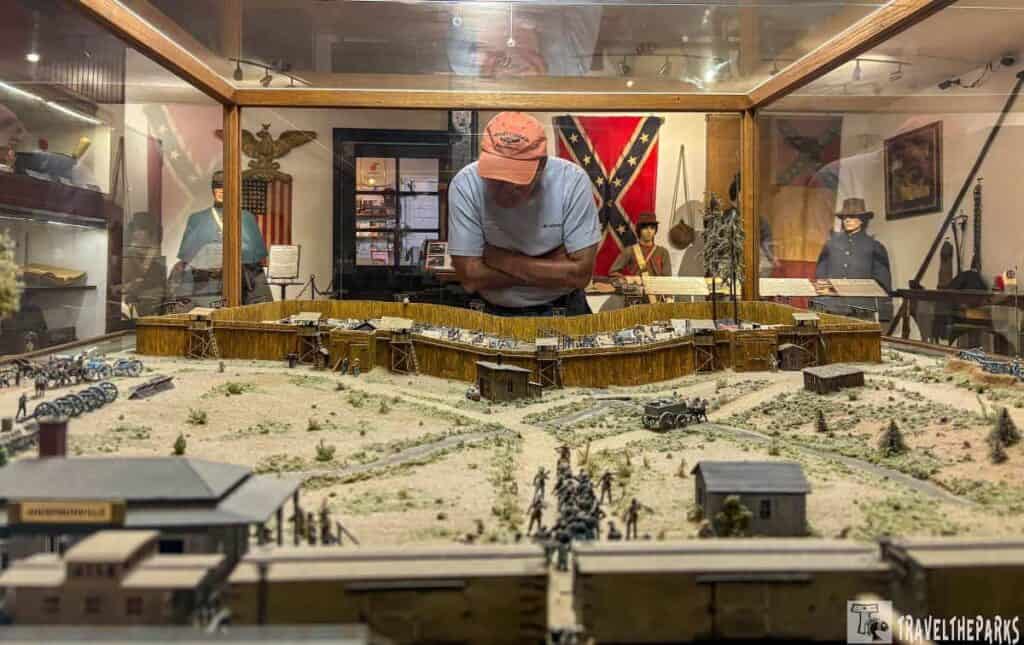
Things to Do: Take a walk at the Civil War prison site or take a self-guided driving tour of the camp. Explore the National Prisoner of War Museum and honor those buried at the cemetery.
Where We Camped:
You can’t camp in the park, but we stayed at the nearby Andersonville RV Park. It had full hookups, was peaceful and was only a few minutes away from the location. Just a short walk from the town, check out the nearby Pioneer Village. You definitely shouldn’t miss the Drummer Boy Museum! Honorable mention goes to Reed Bingham State Park—a great alternative camping spot if you’re looking to break up the drive.
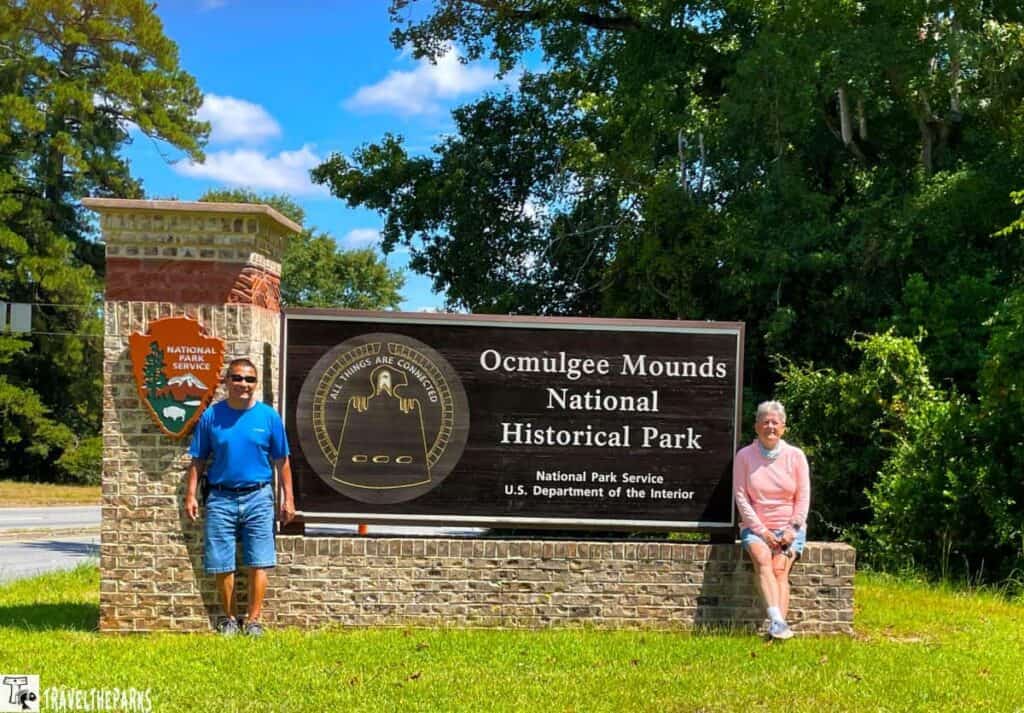
3. Ocmulgee Mounds National Historical Park—Macon, GA
Ocmulgee Mounds National Historical Park is located in Macon, Georgia. It is a remarkable site that preserves over 12,000 years of Native American history and culture. Spanning more than 3,300 acres along the Ocmulgee River, this park showcases impressive ancient earthworks built by the Mississippian culture between 900 and 1100 CE. It includes the Great Temple Mound, and the only known spiral mound in North America.
Need to Know: This ancient site has Native American earthwork mounds that are more than 1000 years old. The Mississippian culture built the mounds for ceremonies, politics, and homes. The site gives a powerful look into the lives of ancient indigenous people in what we now call central Georgia. No entrance fees. Park Grounds & Trails: Open daily from 8:00 AM to 5:00 PM. Visitor Center & Earth Lodge: Open daily from 9:00 AM to 5:00 PM. Closed Thanksgiving Day, Christmas Day, and New Year’s Day.
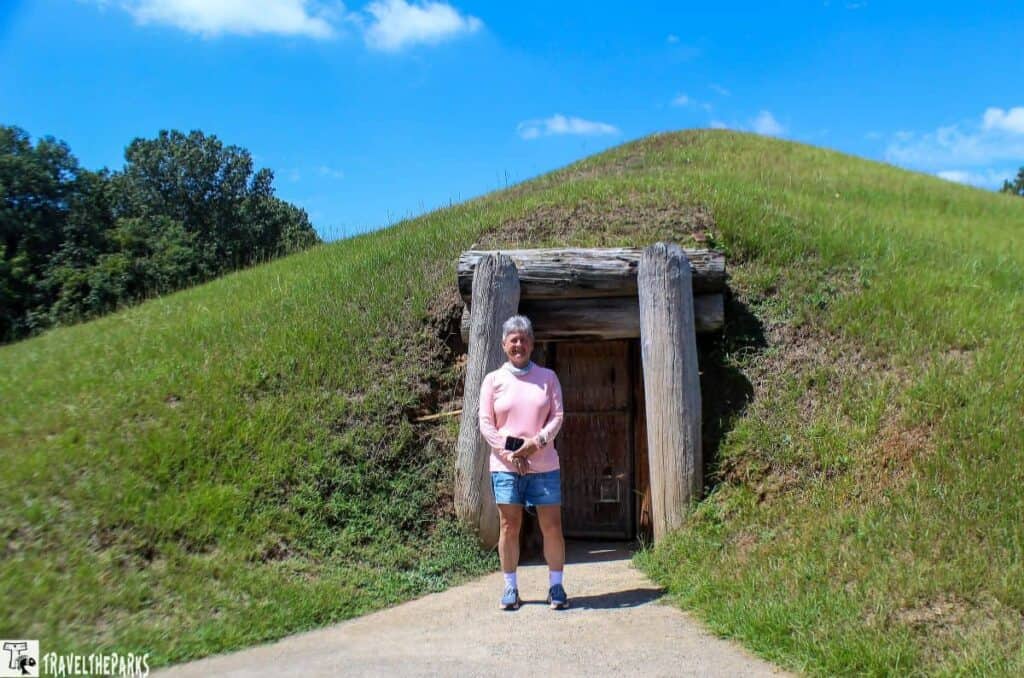
Things to Do:
Climb the 1,000-year-old Great Temple Mound. At the top are panoramic views of the downtown Macon skyline. Step inside the reconstructed Earth Lodge, with its original clay floor that still bears the marks of ancient council meetings. Hike the riverside trails through a peaceful floodplain full of wildlife. For us, it was perfect for stretching our legs after time on the road.
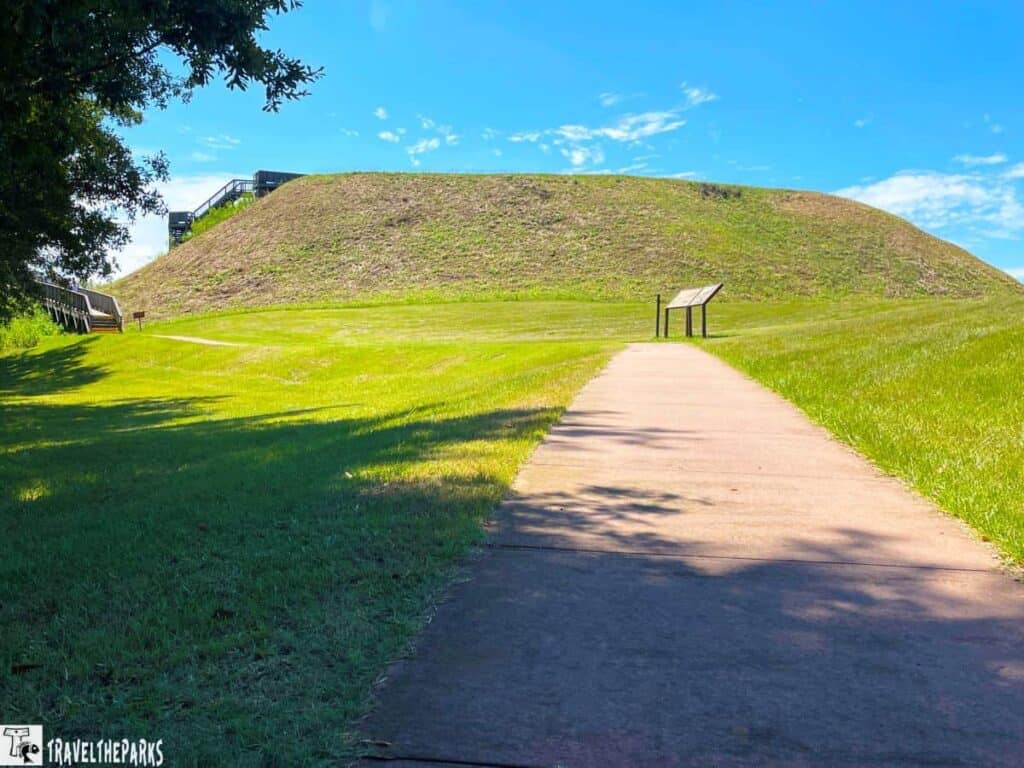
Where We Camped:
We stayed at Lake Tobesofkee Recreation Area, which was a handy spot for checking out Macon. This hidden treasure has complete RV hookups, shady spots, and views of the lake. It’s also just a 20-minute drive from downtown Macon and the Ocmulgee Mounds National Historical Park. We loved the peaceful environment and the quick access to nature trails and swimming spots right at the camp.
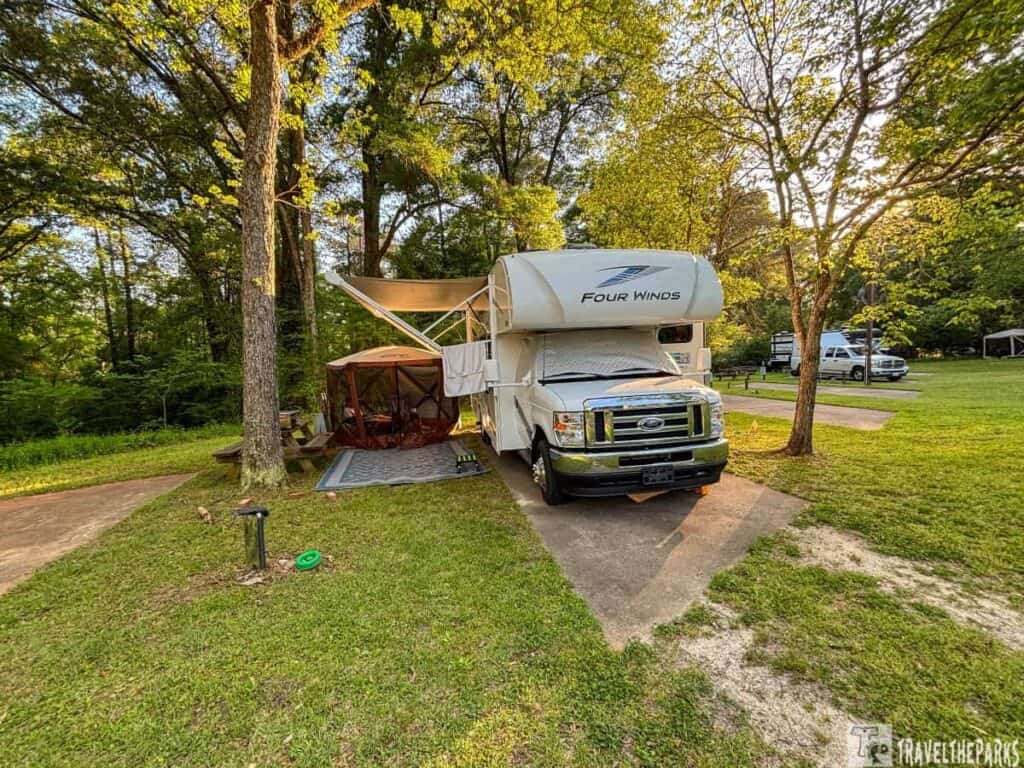
Day 4: Martin Luther King Jr. National Historical Park—Atlanta, GA
Overview: In the heart of Atlanta, this powerful site commemorates the life and work of Dr. Martin Luther King Jr. A visit to this site provides a moving look at the Civil Rights Movement. This site, encompassing Dr. King’s residence, pulpit, and gravesite, is a moving stop on our Georgia NPS trip.
Need to Know: This park is free to visit and includes multiple historic landmarks, such as the King Birth Home, the historic Ebenezer Baptist Church, and The King Center. Most sites are within walking distance of each other in the Sweet Auburn neighborhood.

Things to Do: Begin by exploring the exhibits in the Visitor Center and Freedom Hall. Then, do the self-guided tour of the Sweet Auburn neighborhood. Tour Dr. King’s Birth Home (get tickets early—limited availability). You can look at the outside, but access to the interior is by tour only. Visit the Ebenezer Baptist Church where he preached and stop at Fire Station No. 6. Walk the Civil Rights Walk of Fame. Reflect at Dr. King’s tomb and eternal flame at The King Center.

Where We Camped:
We camped at Stone Mountain Park Campground, about 30–40 minutes from downtown Atlanta. It’s a large, wooded campground with full hookups. There are great walking trails and views of the granite dome—perfect for recharging after a day of city exploring.
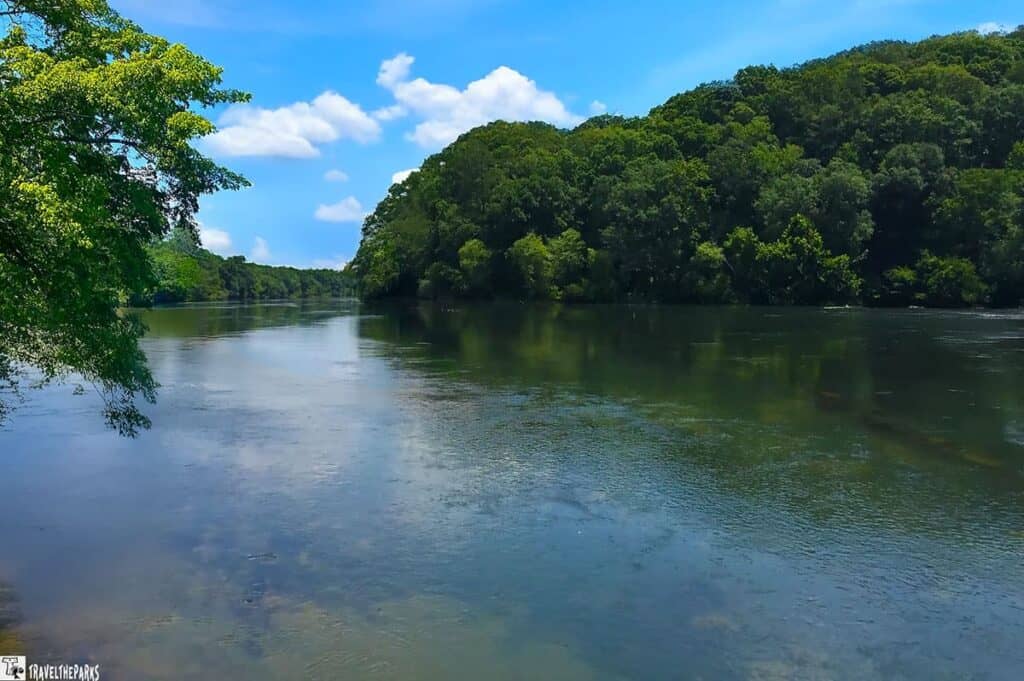
Day 5: Chattahoochee River National Recreation Area (CRNRA) —Atlanta, GA
Overview:
Chattahoochee River National Recreation Area offers a surprising escape into nature right in the heart of metro Atlanta. Spread across multiple units along 22 miles of riverfront. This park is a haven for outdoor lovers looking to paddle, hike, or simply unwind beside the water.
Need to Know:
The park is made up of a network of units scattered along the river, with several popular access points in Sandy Springs, including Powers Island, East Palisades, and Island Ford. Each area offers something a little different—from rugged trails to peaceful fishing spots.
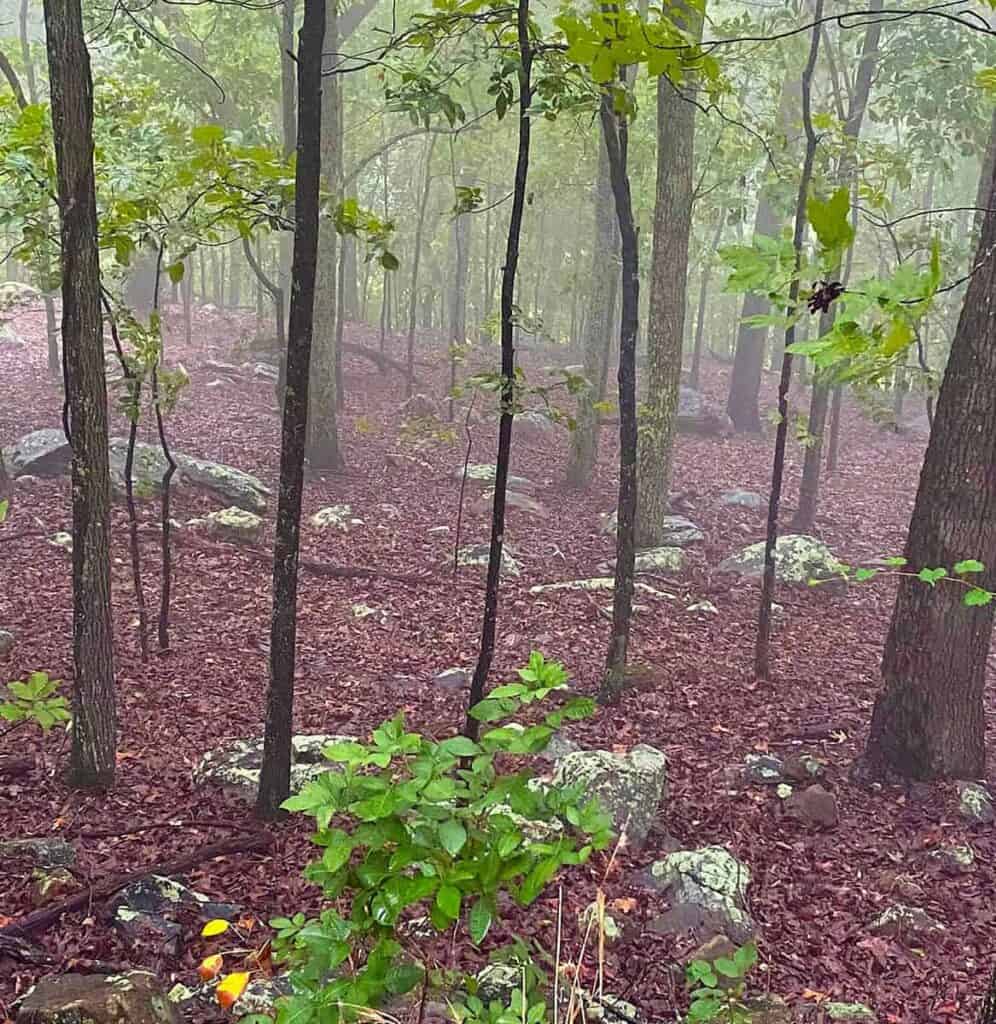
Things to Do: To truly enjoy the Chattahoochee River National Recreation Area, hop in a kayak or tube and glide along the calm parts of the river. If you want to stay dry, you can enjoy beautiful hikes at Powers Island and Cochran Shoals. However, we discovered that the Island Ford Trail is a quieter and less crowded option. Mornings are the best time to see wildlife and watch birds along the riverbank in the woods. Our favorite thing to do here was fly fishing for trout. It’s an enjoyable way to appreciate the beauty of the river.
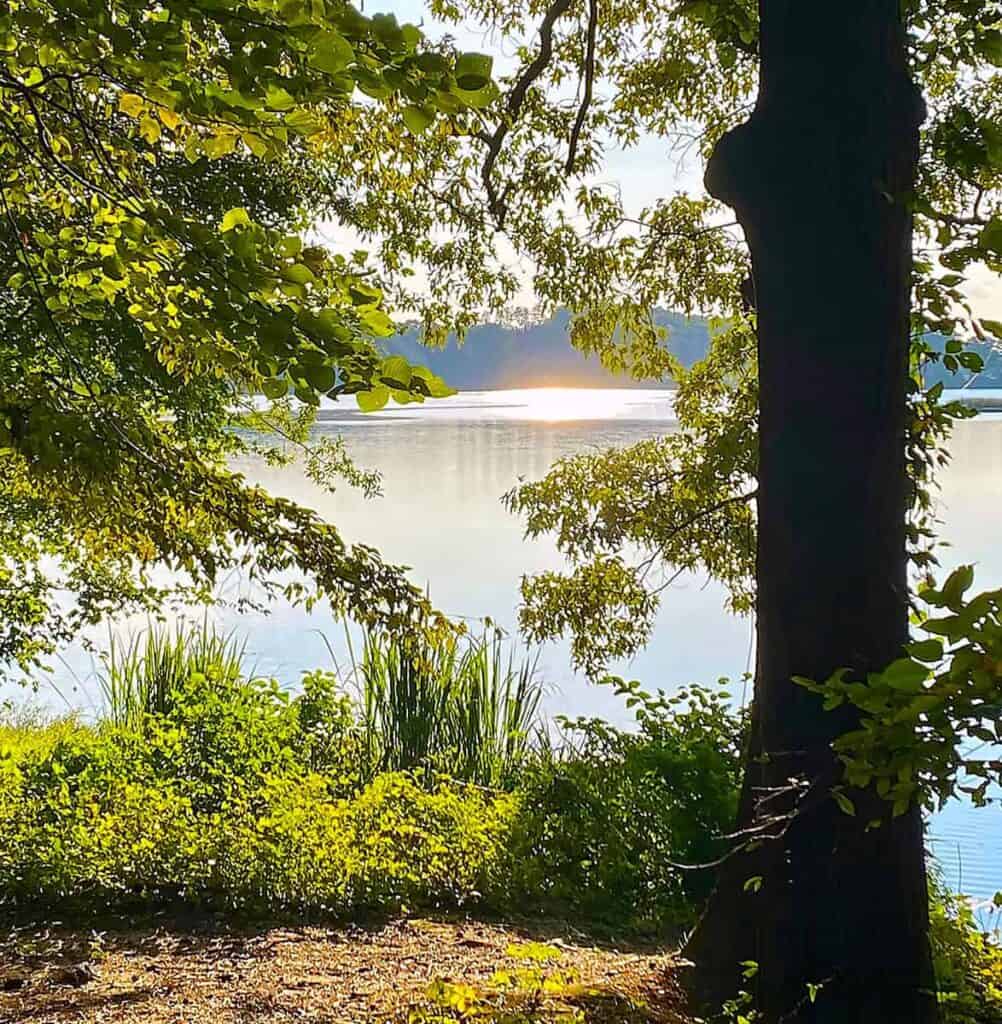
Where We Camped: McKinney Campground made a great base for exploring both the Chattahoochee River sites and the greater Atlanta area. The spacious campsites and access to Lake Allatoona were a relaxing retreat after a day in the city or on the river.
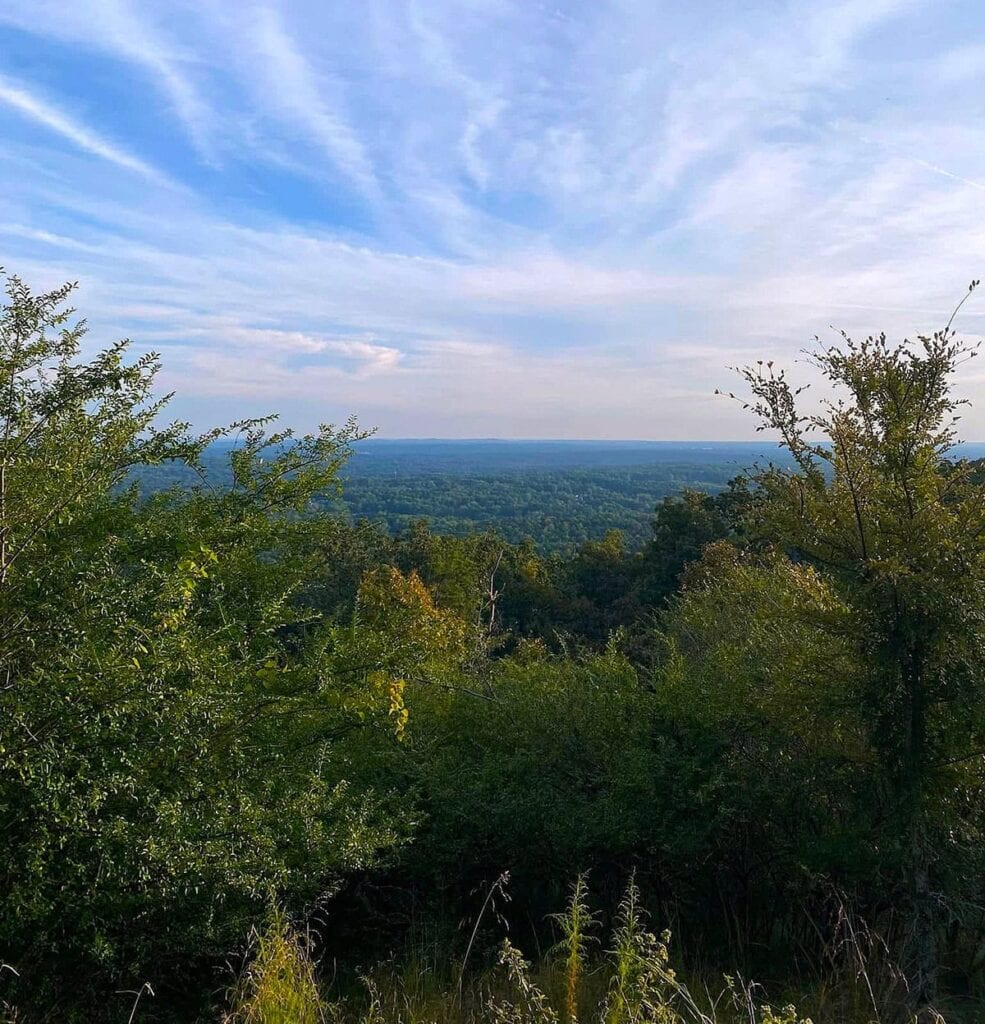
Day 6: Kennesaw Mountain National Battlefield Park – Kennesaw, GA
Overview: Kennesaw Mountain National Historic Site preserves the countryside where a significate battle took place during the Atlanta Campaign in the Civil War. Today, this protected battlefield features beautiful hiking trails, important historic sites and a museum that shares stories of the soldiers and events that took place here. It is a special place where beautiful landscapes harbor a deep history.
Need to Know: Park entrance: $5 per vehicle or per person (walk-ins) or $40 annual KEMO pass—all paid via credit/debit; no cash accepted. America the Beautiful passes accepted. Visitor Center: Open 9 AM–5 PM daily, closed on Thanksgiving, Christmas & New Year’s Day. Park Grounds (day-use only): November–March (Standard Time): Open daily 6:30 AM–6:30 PM. March–November (Daylight Saving Time): Open daily 6:30 AM–8:30 PM. Shuttle service weekends only ($3); weekdays vehicle access permitted. This battlefield site offers 18 miles of trails that wind through Civil War earthworks, historic trenches, and artillery positions. The climb to the summit is steep, but worth it for the panoramic views of downtown Atlanta.
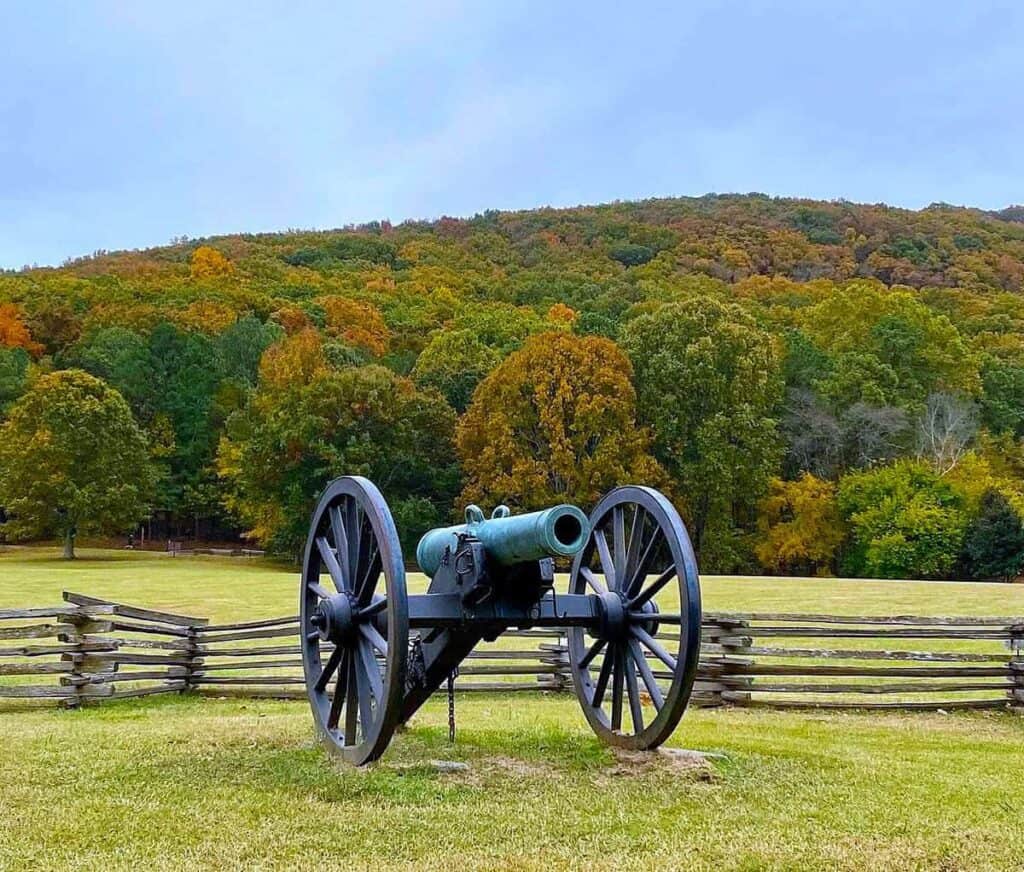
Things to Do:
Hiking to the top of Kennesaw Mountain is a must. Go early to avoid crowds or time it for sunset views over the Atlanta skyline. Start your visit at the visitor center and museum, where you’ll get a deeper understanding of the pivotal 1864 battle. View the park movie, Kennesaw: One Last Mountain. Then head to Cheatham Hill to walk among Civil War-era cannons and Confederate trenches. Use your time to drive yourself around the park’s trail system and battlefield monuments.
Where We Camped: McKinney Campground (COE) made an excellent base for exploring both Kennesaw Mountain and the nearby Chattahoochee River NRA. The peaceful lakeside setting was a perfect way to unwind after a day on the battlefield trails.
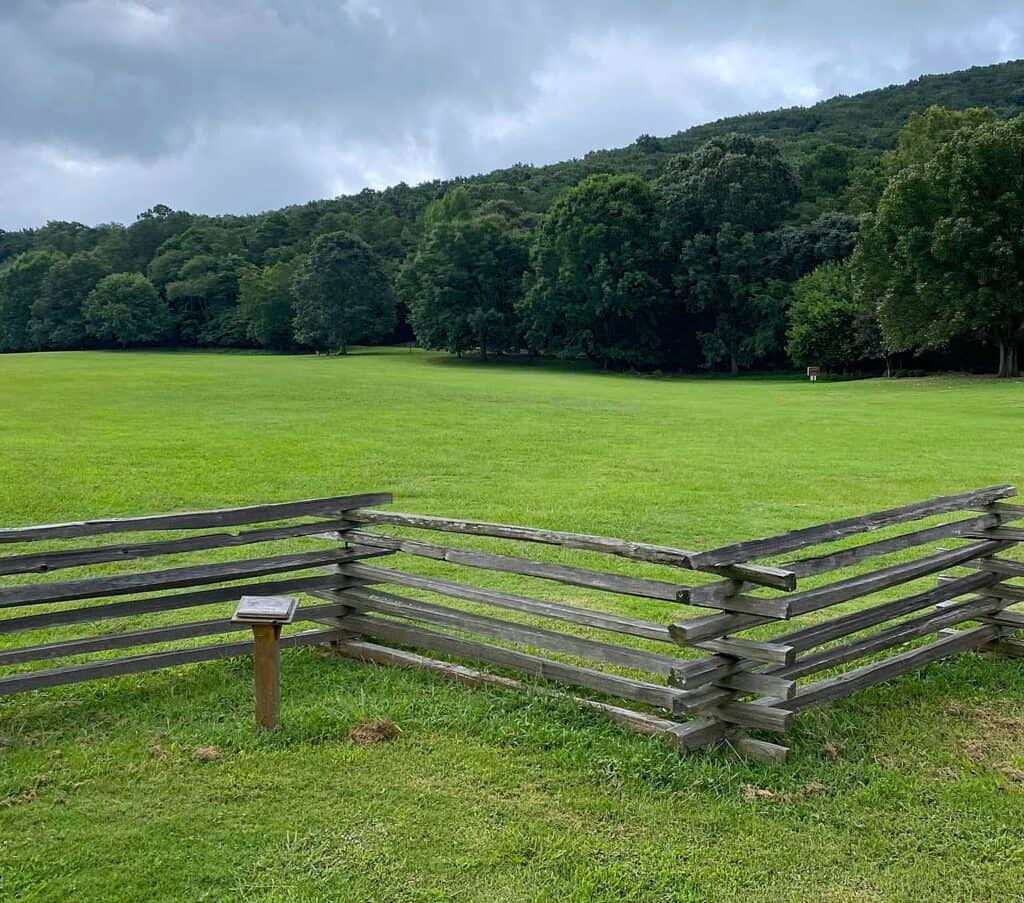
Day 7: Trail of Tears National Historic Trail (segments in Georgia)
Overview: The Trail of Tears National Historic Trail commemorates the tragic forced relocation of the Cherokee people from their ancestral lands in the 1830s. As you travel through North Georgia, you’ll find several key interpretive sites that honor and tell the story of this painful chapter in American history.
Need to Know:
This trail commemorates the forced relocation of the Cherokee people. This isn’t a single hiking trail but a network of routes and historical locations tied to the Cherokee removal. North Georgia features several interpretive sites. Many of these sites are easily accessible by car and offer opportunities to reflect, learn, and walk where history unfolded.
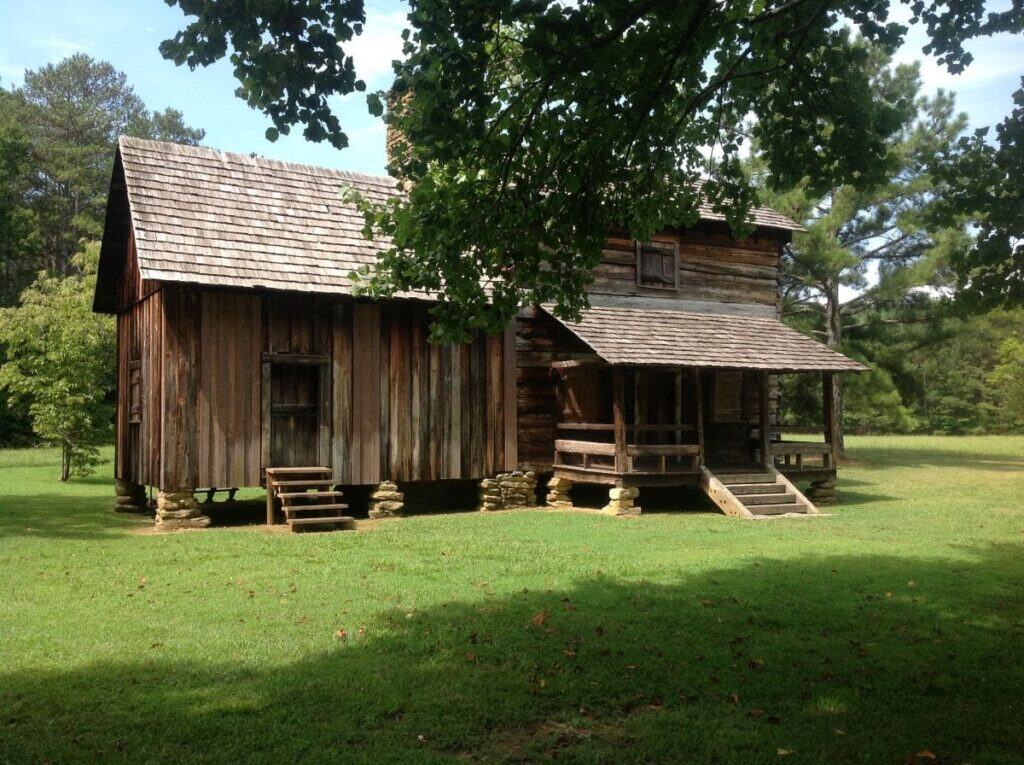
Things to Do:
- Visit New Echota Historic Site: the capital of the Cherokee Nation from 1825 until removal. This well-preserved state park features reconstructed and original buildings (Supreme Court, Print Shop, Tavern, Council House, Vann’s Tavern, several homes). The visitor center features exhibits that tell the powerful story of the Cherokee Nation and the Trail of Tears, making it the most comprehensive site dedicated to this important chapter of history.
- Explore trail segments near Rome, GA: Near towns like Rome, GA; these commemorative markers trace the path along which the Cherokee people were forced to walk. Historical marker locations: Fort Hoskins, Campground Church, Fort Hetzel and Fort Wool.
- Tour the Chieftains Museum / Major Ridge Home: A museum dedicated to Cherokee history and culture, particularly the life of Major Ridge and the Ridge family. A National Historic Landmark preserving the home of Major Ridge, an important—and controversial—Cherokee leader.
- Stop at the Chief Vann House: an elegant brick mansion built by James Vann, showcasing Cherokee prosperity before removal.
- Visit the John Ross House: home of Principal Chief John Ross, who led efforts to resist the removal through legal and political means.
Where We Camped:
We camped at James H. “Sloppy” Floyd State Park, which offered quiet, shaded campsites and easy access to several Trail of Tears-related sites. A peaceful base to reflect on a heavy but important part of our journey.

Day 8: Chickamauga & Chattanooga National Military Park
Overview: Chickamauga & Chattanooga National Military Park straddles the border of Georgia and Tennessee. This historic park preserves key battlefields from the Civil War’s Chickamauga Campaign and the Battles for Chattanooga. It’s the oldest and largest of the U.S. Civil War parks, offering a rich blend of history, scenic overlooks, and outdoor exploration.
Need to Know: No Entrance Fee: There is no entrance fee for either Chickamauga Battlefield or Lookout Mountain Battlefield. However, Point Park—part of Lookout Mountain—does charge a small admission fee, managed by the National Park Service.
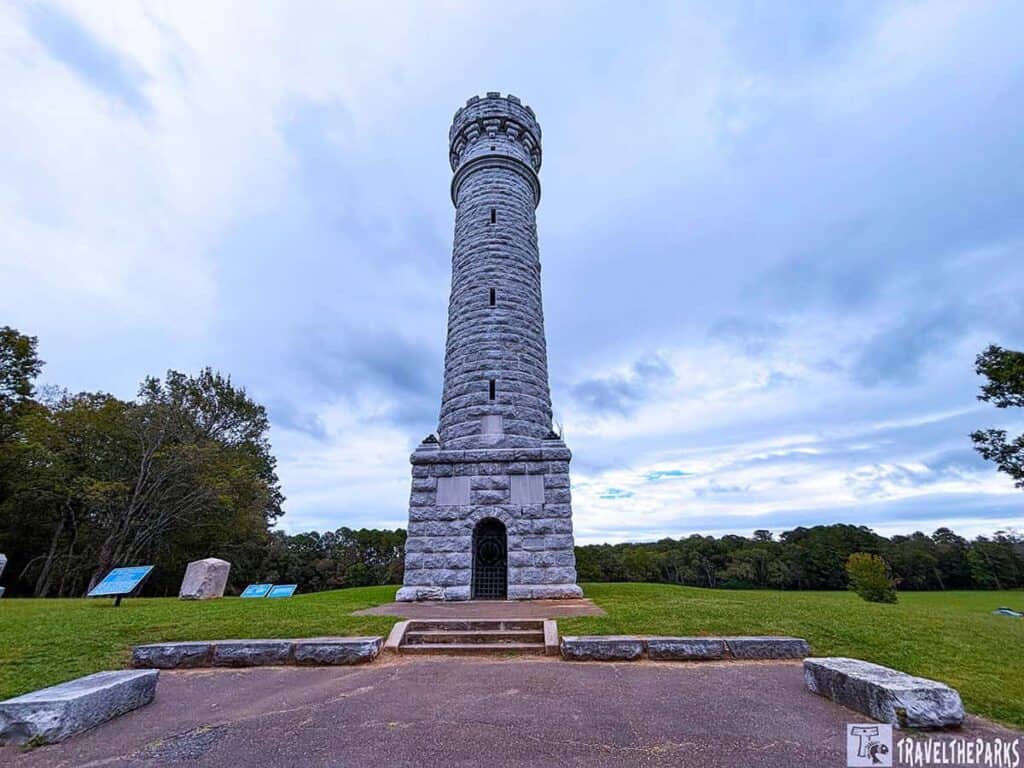
Things to Do:
Start your visit at the Visitor Center and Museum at Chickamauga Battlefield in Fort Oglethorpe, GA. There you can see interesting artifacts, explore exhibits and watch an introductory film. Climb the 85-foot Wilder Tower to see a wide view of the battlefield. Discover the extensive park by taking the 7-mile Auto Tour, which has informative stops along the way. There are over 50 miles of trails available for hiking or horseback riding. Join seasonal ranger programs for discussions and tours to improve your understanding. Explore the region to encounter over 700 monuments, markers, cannons, and memorials paying tribute to the battle.
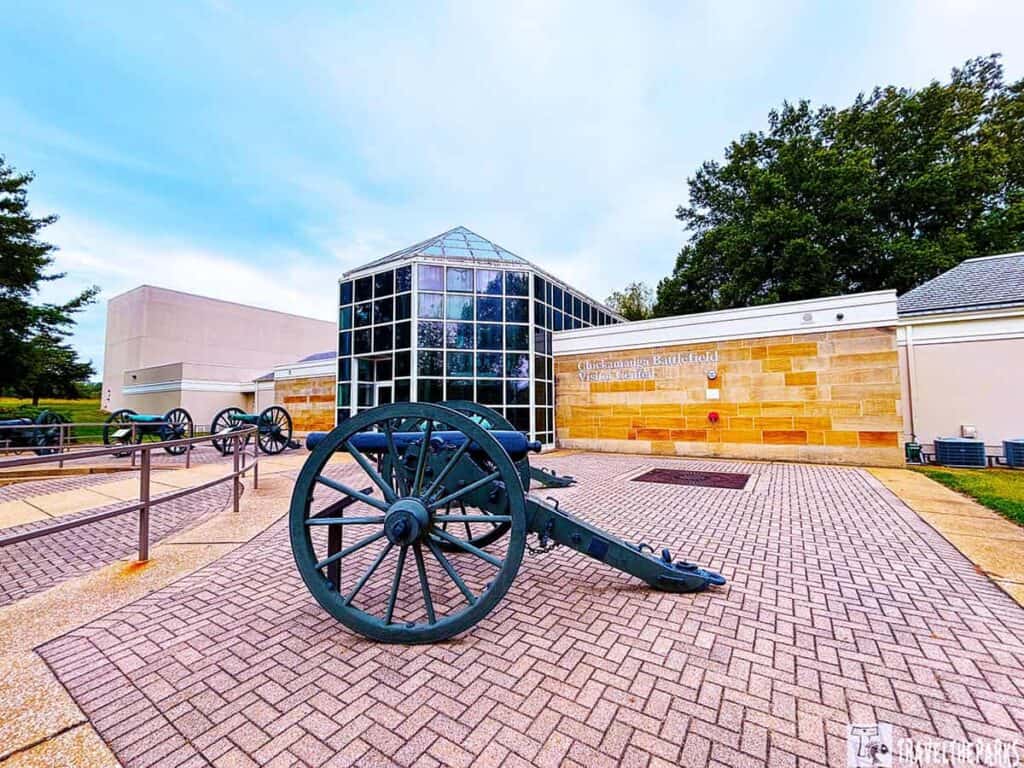
At Lookout Mountain Battlefield (Chattanooga, TN), the focal point is Point Park, offering breathtaking views of Chattanooga and the Tennessee River, along with Civil War monuments and cannons. Nearby, the Battles for Chattanooga Museum provides an immersive electric map presentation of the “Battle Above the Clouds.” Explore the mountain’s history and scenery via hiking trails connecting key sites like Point Park, the historic Cravens House (a headquarters and hospital), and the iconic Sunset Rock, a dramatic overlook favored by photographers and historically used by generals.
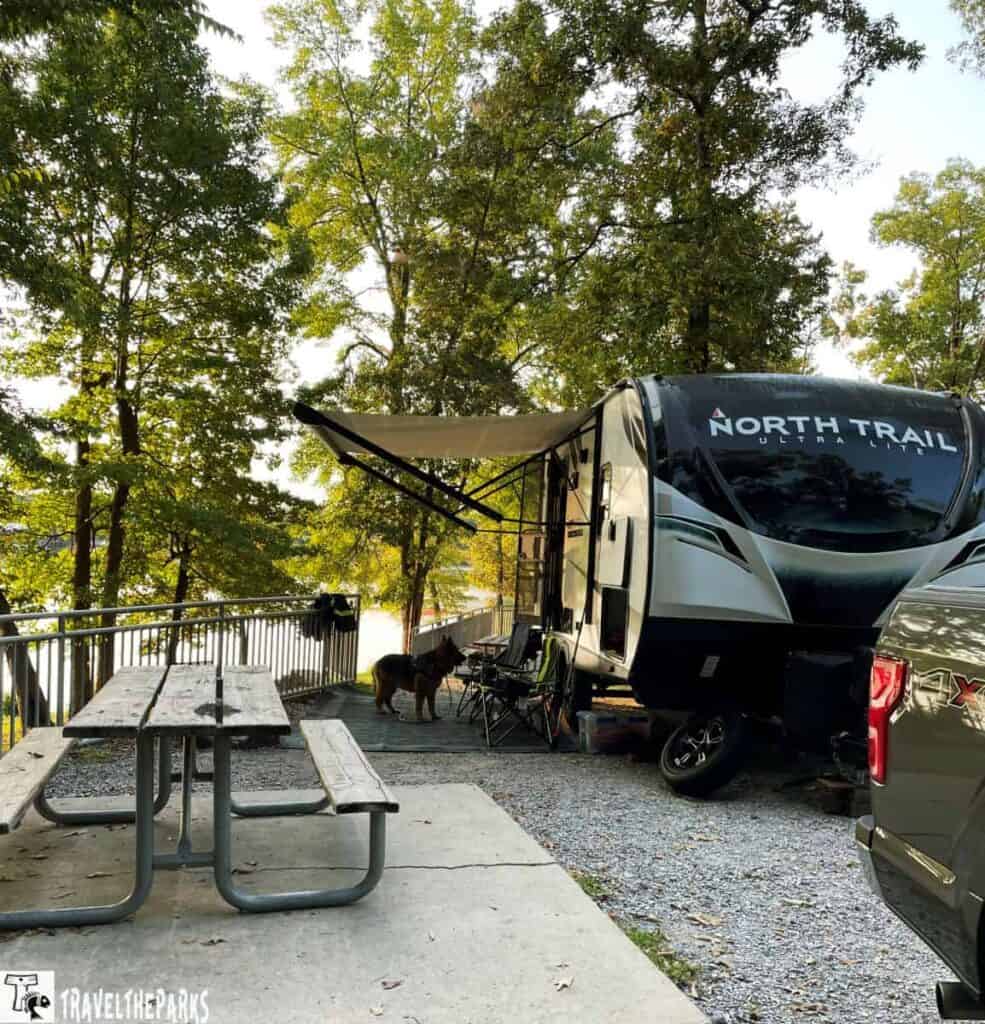
Where We Camped: We camped at Harrison Bay State Park in Tennessee. It is a 30-minute drive to the park. It’s a large campground on Chickamauga Lake near Chattanooga. This park offers tent and RV sites (many with hookups), cabins, and marina access. It also has free Wi-Fi.
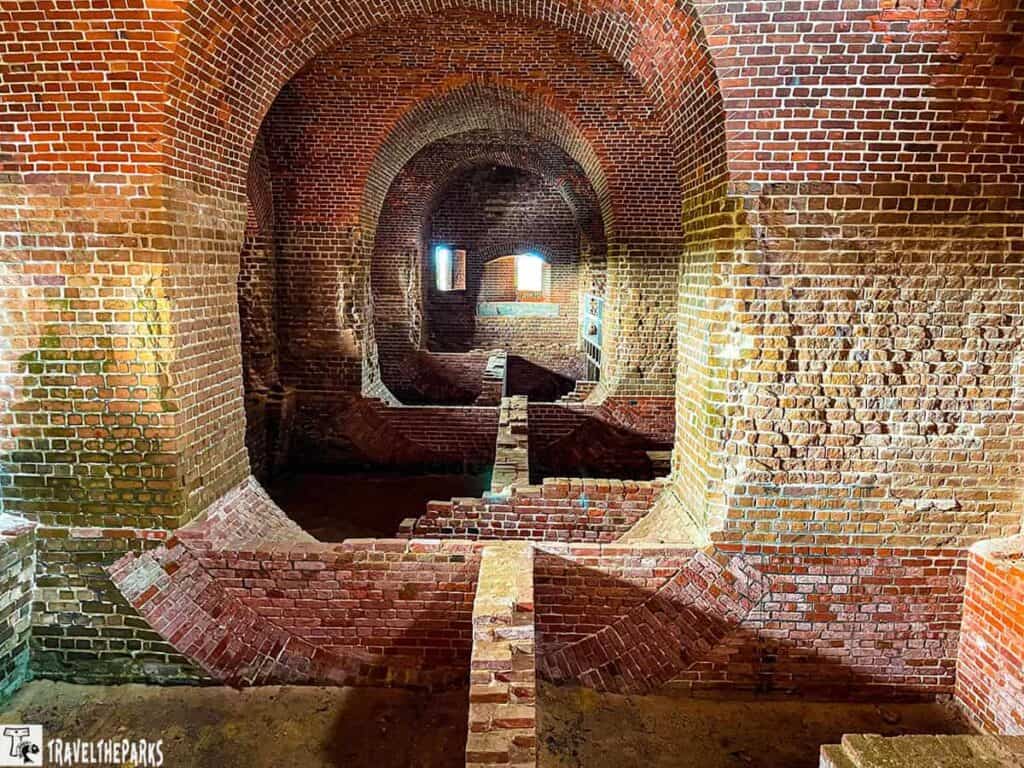
Day 9: Fort Pulaski National Monument – Savannah, GA
Overview:
Fort Pulaski National Monument stands as a testament to Civil War innovation and coastal defense history just outside Savannah, Georgia. Built between 1829 and 1847, this massive brick fortress guarded the Savannah River and protected the city from any naval attack. It became famous during the Civil War when Union forces used rifled cannons in 1862 to breach its walls. This marked a turning point in military engineering.
Need to Know: Fort Pulaski National Monument is on Cockspur Island, about 15 miles east of downtown Savannah. Entrance to the park is $10 per vehicle, which covers all passengers. You can use the America the Beautiful pass. The fort is typically open from 9:00 AM to 5:00 PM. Closed for Thanksgiving, Christmas, and New Year’s Day . There are no on-site restaurants, so it’s best to bring your own snacks or plan a meal in Savannah. However, restrooms are available at the visitor center.
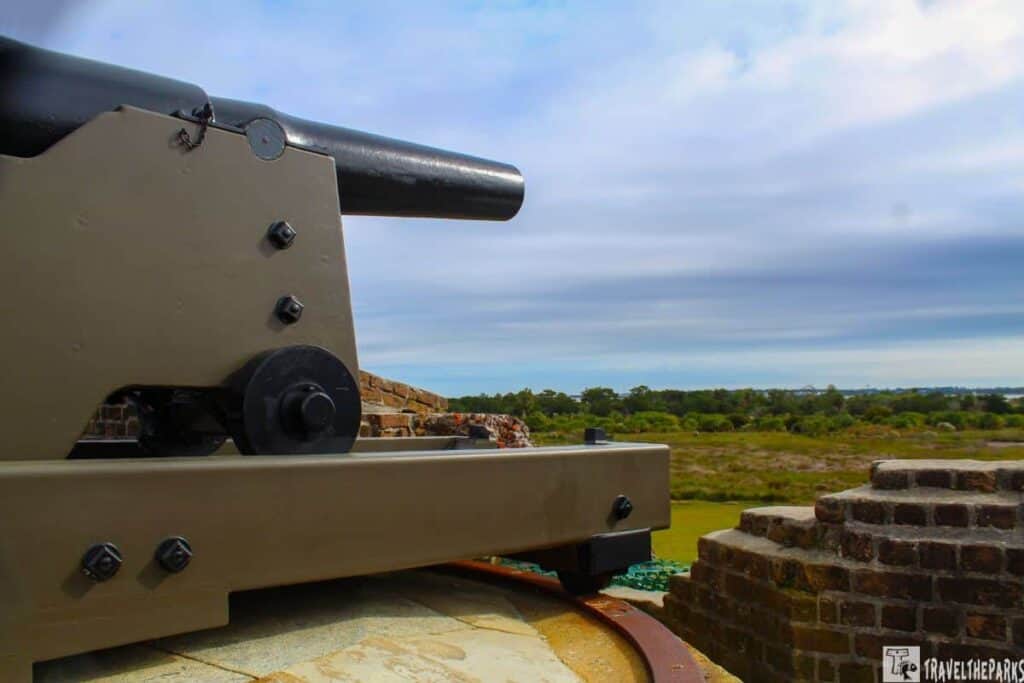
Things to Do:
At Fort Pulaski, you can visit the old brick fort, walk over the drawbridge and learn about its important role in the Civil War. Discover how the Union’s siege and advances in artillery technology transformed military history. Outdoor lovers can find a calm getaway by hiking the beautiful McQueens Island Rail Trail. The path winds through wetlands and offers coastal vistas. No matter if you love history or enjoy nature, there is something for everyone to appreciate.

Camping Info:
We parked our RV at Skidaway Island State Park (≈15 min drive). The park features spacious, well-maintained RV sites with full hookups (water, electricity, and sewer). This makes it a comfortable spot for both brief stays and longer visits. Set amidst lush forests and salt marshes, it offers a peaceful environment with plenty of outdoor activities. RV campers can enjoy scenic hikes on over 5 miles of trails. Birdwatching and picnicking with stunning views of the waterways.

Day 10. Fort Frederica National Monument (St. Simons Island)
Overview: Step back in time at Fort Frederica National Monument. Here, colonial-era ruins and moss-draped live oaks tell the story of Georgia’s early British settlers. Once a fortified town built to defend the colony from Spanish invasion. Today, it’s a quiet site, perfect for exploring history at a relaxed pace.
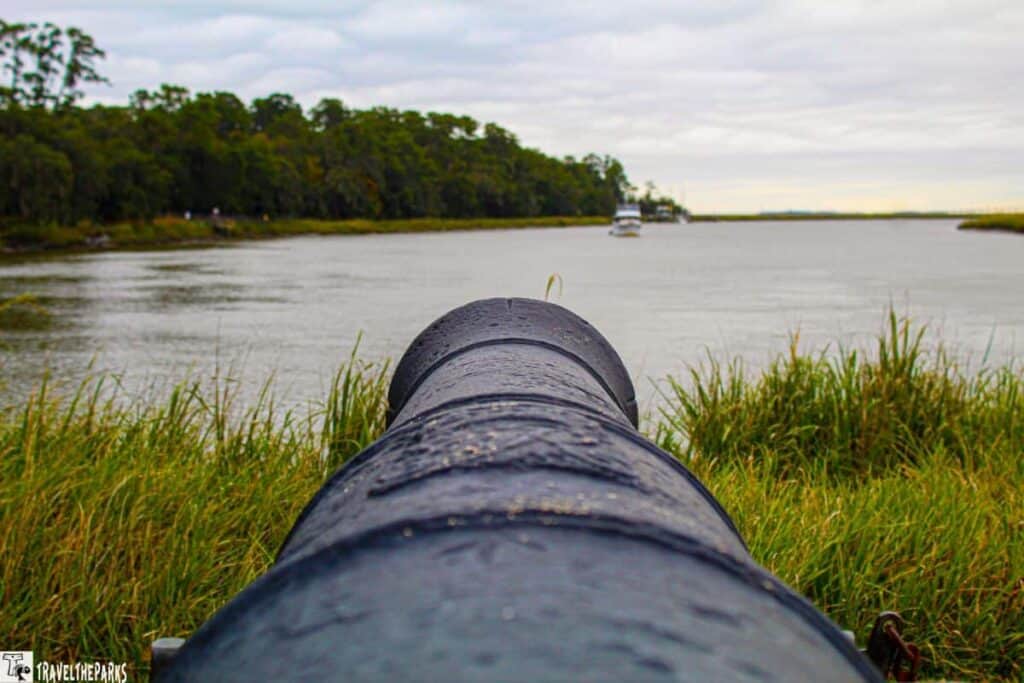
Need to Know: Free to visit; no entrance fee required. Open daily from 9:00 AM to 5:00 PM (closed on Thanksgiving, Christmas, and New Year’s Day). Pets: Leashed pets are welcome on the grounds (not inside buildings). Beware of sand spurs with pets. Bring water, snacks, and binoculars.
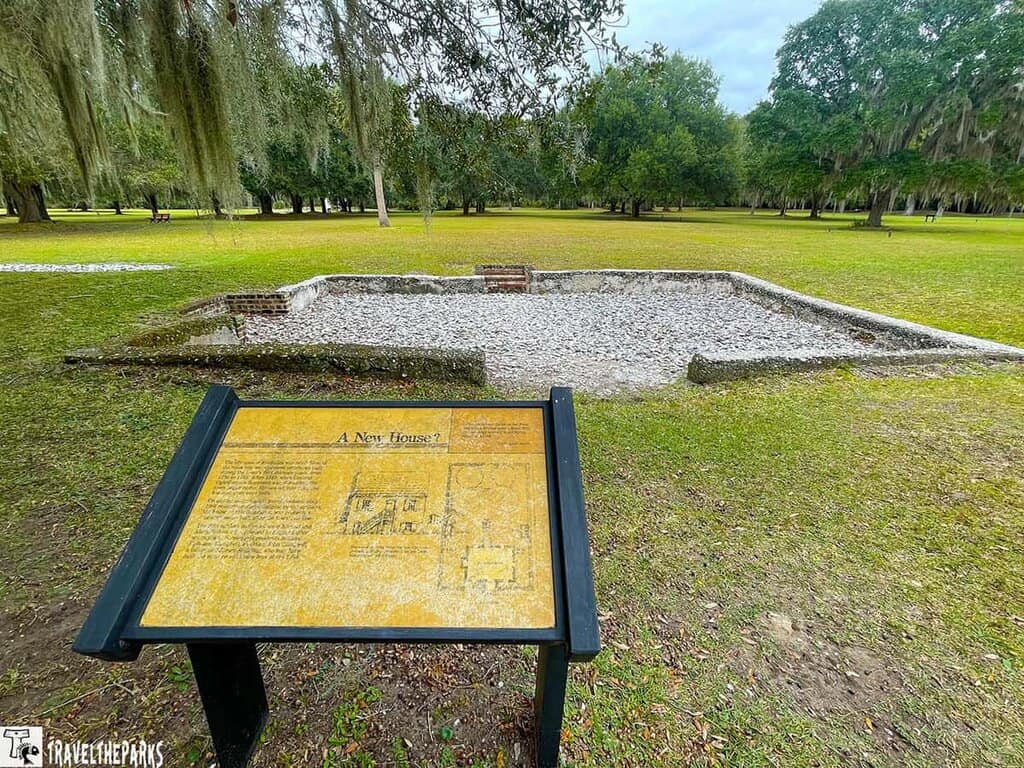
Things to Do:
At Fort Frederica National Monument, people can visit the remains of an important British fort and settlement from the 1700s. This site was significant in the history of colonial Georgia. Stroll down the beautiful paths to explore old ruins such as the fort’s walls, the barracks and the foundations of the town. The visitor center has interesting displays. There is a movie that explains the importance of the area in the fight between Britain and Spain for control of the land. Ranger-led activities and living history shows make history exciting, making this place a perfect spot for history fans and kids alike. Make sure to take a walk under the oak trees covered in moss by the beautiful Frederica River.

Don’t miss the nearby Bloody Marsh Battle Site. A short drive from Fort Frederica, this site features interpretive signs detailing the battle. It’s a quick but fascinating stop to complete your historical visit. The quiet marshland offers a striking contrast to its violent past—perfect for reflection and photography.
Where We Camped:
We parked our RV at Blythe Island Regional Park. This park is about 12 miles (a 20-minute drive) from Fort Frederica National Monument on St. Simons Island, Georgia. There are 31 campsites available, including full hook-up sites for RVs. It sits amid the marshes of the Altamaha River, providing peaceful views and an abundance of wildlife. Reservations are recommended, especially during peak seasons, and can be made through the Glynn County Parks and Recreation website.
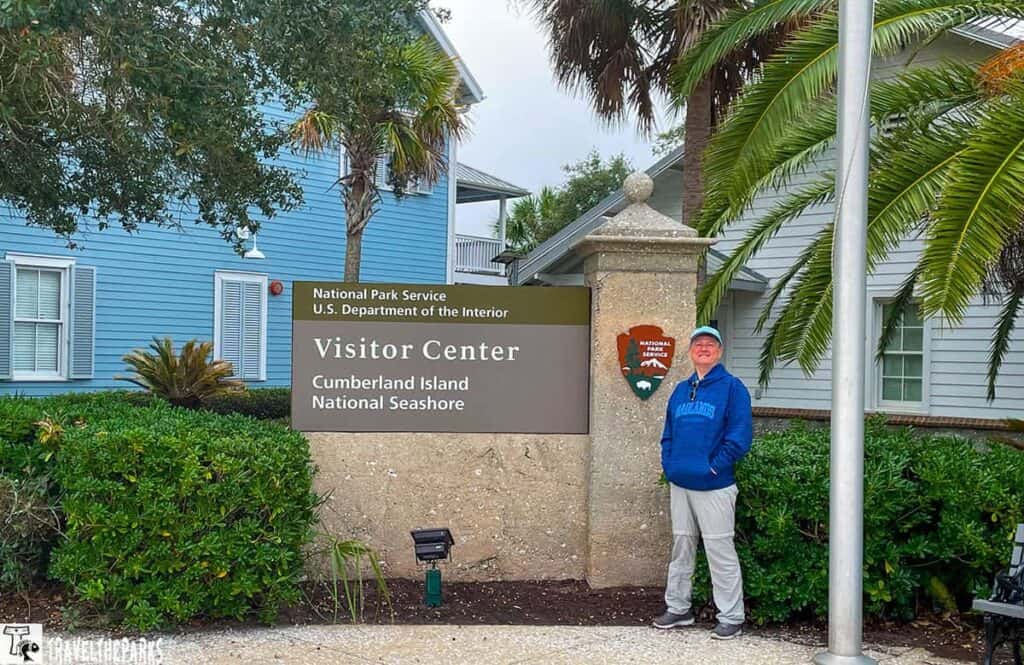
Day 12: Cumberland Island National Seashore–St. Marys, GA
Overview: Cumberland Island National Seashore is Georgia’s largest and wildest barrier island. It is renowned for its unspoiled beaches, dense maritime forests, and abundant wildlife. This hidden gem off the coast offers visitors a rare chance of experiencing nature largely untouched by modern development. From wandering among wild horses roaming freely to explore historic ruins like the Carnegie family’s sprawling Dungeness estate and the elegant Plum Orchard Mansion, the island is a blend of natural beauty and rich history.
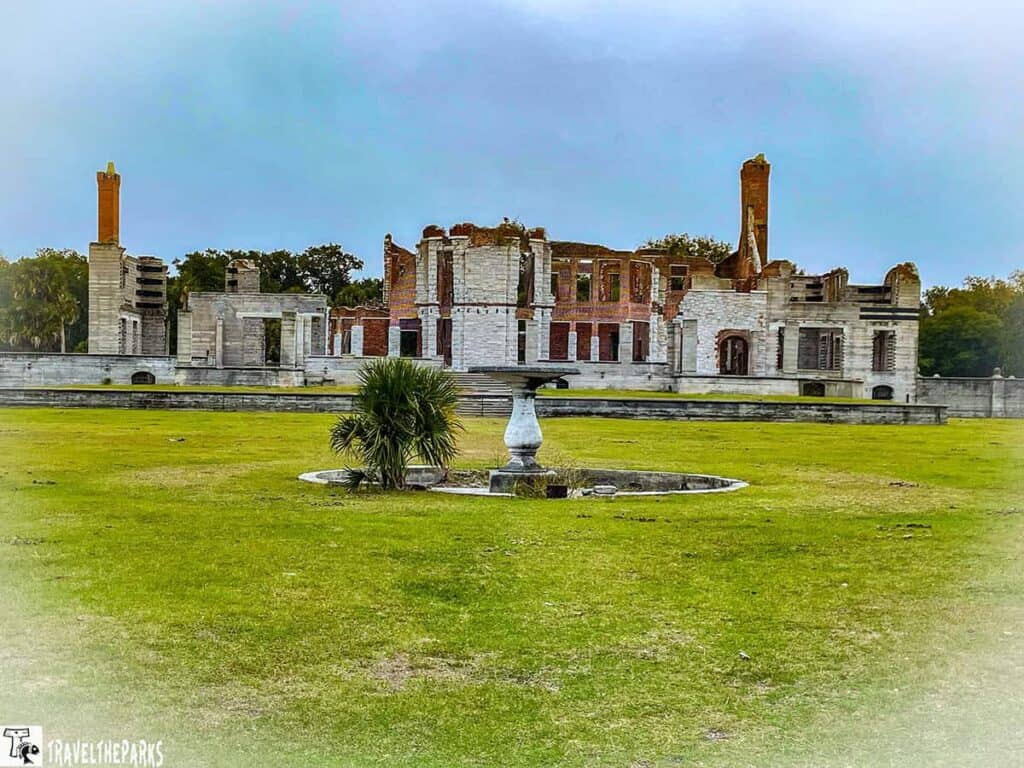
Need to Know:
Cumberland Island National Seashore is accessible only by ferry; plan ahead and book your ferry tickets in advance. The ferry operates daily but with limited schedules, especially in the off-season, so check the official website for current hours and availability. The visitor center is open from 9:00 AM to 5:00 PM daily, except on major holidays. Ferry services depart in the morning (around 9:00 AM) with the return trips in the afternoon, but times vary depending on the season. The entrance fee is $15.00. You must purchase the entrance fee separately, either on-site at the visitor center before boarding the ferry. You can use the America the Beautiful pass. The island can be hot/humid, particularly in summer, so pack appropriately with sunscreen, plenty of water, and sturdy shoes.

Things to Do:
A great way to explore Cumberland Island National Seashore is by taking the Lands and Legacies Tour. This 6-hour guided van trip takes you through the island’s fascinating history. You will visit the old remains of the Gilded Age, such as the Dungeness Mansion and Plum Orchard. You may also see wild horses wandering in the coastal forests. Knowledgeable rangers will share stories about the island’s Native American history, colonial times and industrial development. Beautiful beaches, marshy areas, and the historic First African Baptist Church (well-known for its connection to JFK Jr.) are all included on this tour. Remember to bring your camera, water and binoculars to spot wildlife!
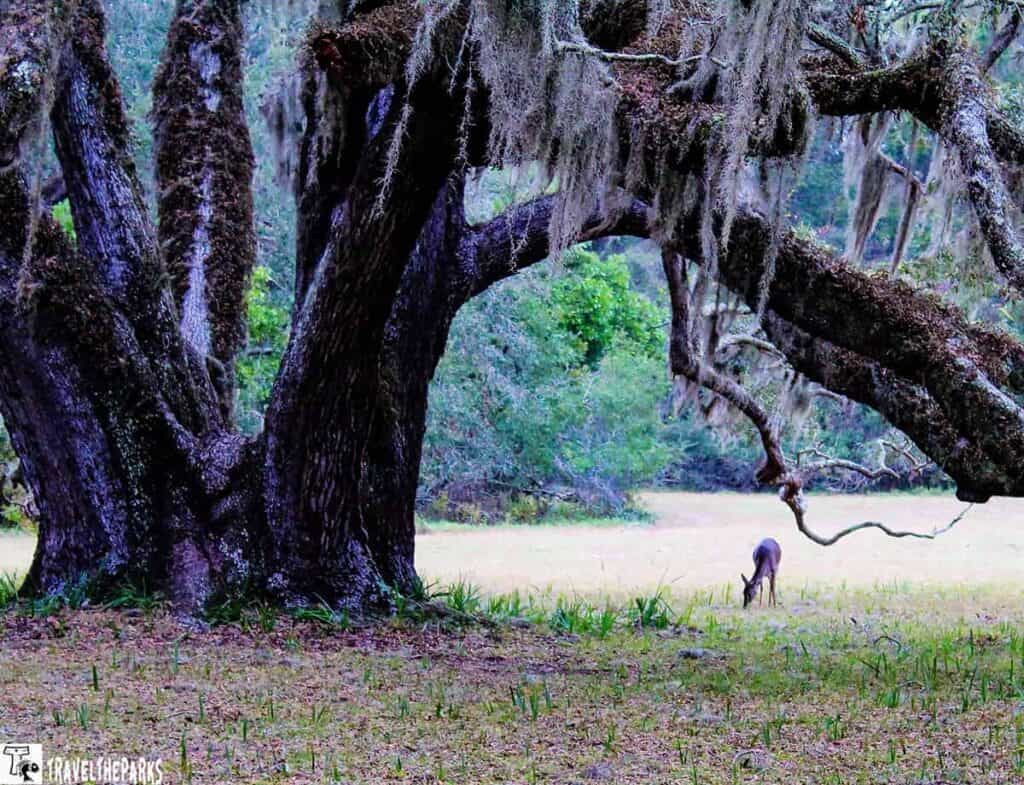
Camping Info:
No RV camping on the island, but we stayed at Crooked River State Park, which has spacious RV sites and is close to the ferry launch in St. Marys.
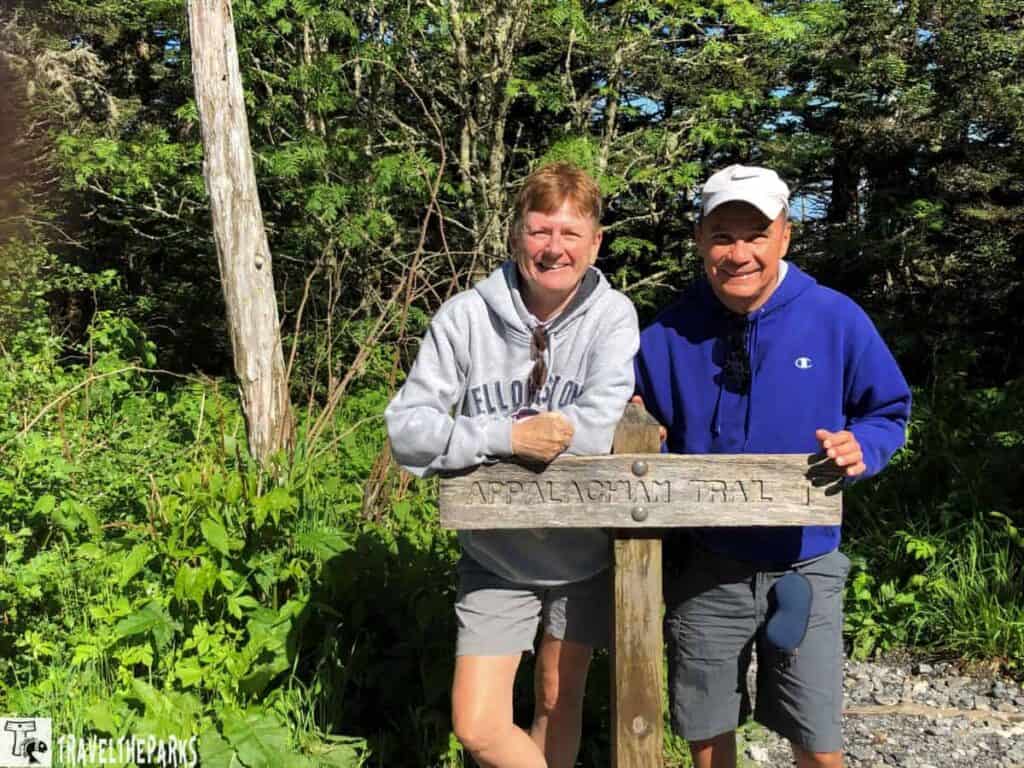
Optional: Appalachian National Scenic Trail (Georgia section)
Overview: For avid hikers, Georgia offers a perfect introduction to the Appalachian Trail (AT), featuring the southern terminus at Springer Mountain. Having hiked sections of the AT in Shenandoah and the Great Smoky Mountains, we were eager to experience the Georgia section—packed with its own stunning vistas, rich history, and classic AT culture. Whether you’re looking for a short day hike or want to dive into the full experience, Georgia’s AT section has something for everyone.
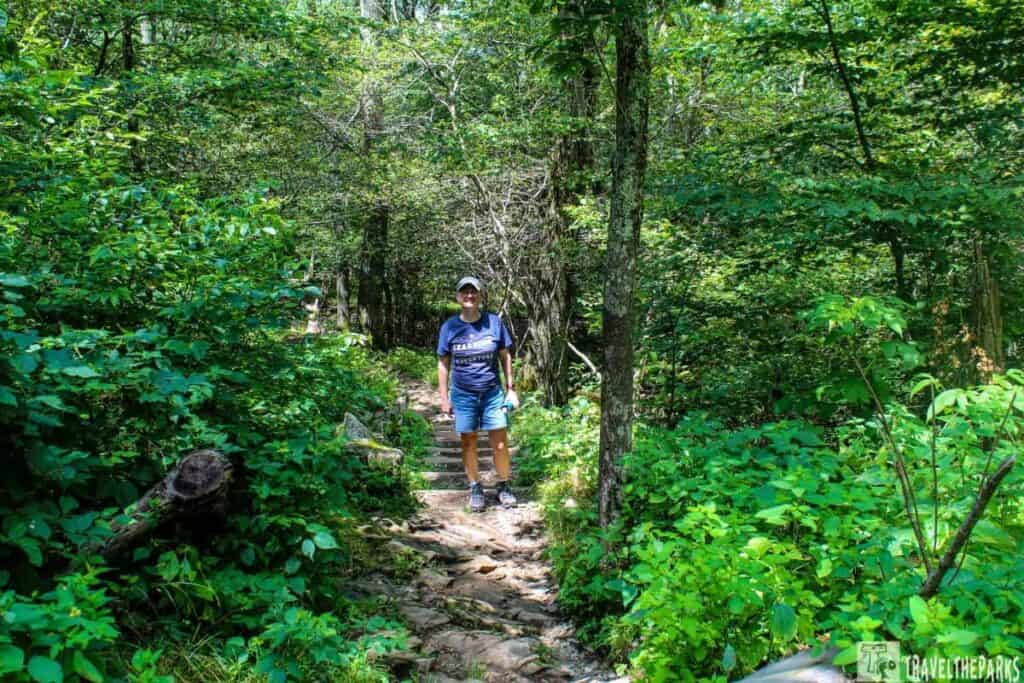
Need to Know:
Georgia is home to the southern terminus of the Appalachian Trail at Springer Mountain, marking the beginning of the 2,190-mile trek from Georgia to Maine. The trail here offers a mix of challenging climbs, lush forests, and picturesque views.
Things to Do: Hike a section of the AT. There are plenty of short, manageable in-and-out hikes perfect for a day trip. Stop by the AT Approach Trail at Amicalola Falls State Park to get a taste of the iconic trail. Visit the Hiker Hostel or the various shelters along the way to get a feel for AT culture and meet fellow hikers.
Camping Info:
There are several campsites along the AT, including basic sites and shelters. This makes it ideal for both seasoned hikers and those new to the trail. Amicalola Falls State Park also offers great camping facilities for those looking to start their hike in comfort before hitting the trail.

Essential Packing Items for a Successful Georgia National Park Road Trip
When you go on an RV trip to Georgia’s national parks, especially if you plan to hike. Be sure to prepare and dress yourself for various types of trails and weather. You will need to bring along comfortable broken-in hiking shoes. Also, wear clothing that will resist water, wear layered attire for changing weather and bring a waterproof jacket just in case. Don’t forget to bring a sturdy daypack with items such as a refillable water bottle or hydration pack. Bring snacks for the trail, sunscreen, bug spray, an easy first aid kit and a map or a trail app that does not require a connection.
Trekking poles will make it somewhat easier to hike steep trails. Include a wide-brimmed hat and sunglasses to keep the intense southern sun out of your eyes. If you are going into less-developed regions, remember to bring a flashlight or headlamp, a multi-tool, and some emergency items such as a whistle or thermal blanket. Never forget to bring your park pass, ID and sense of adventure. These will help you have a good time on Georgia’s historic trails.
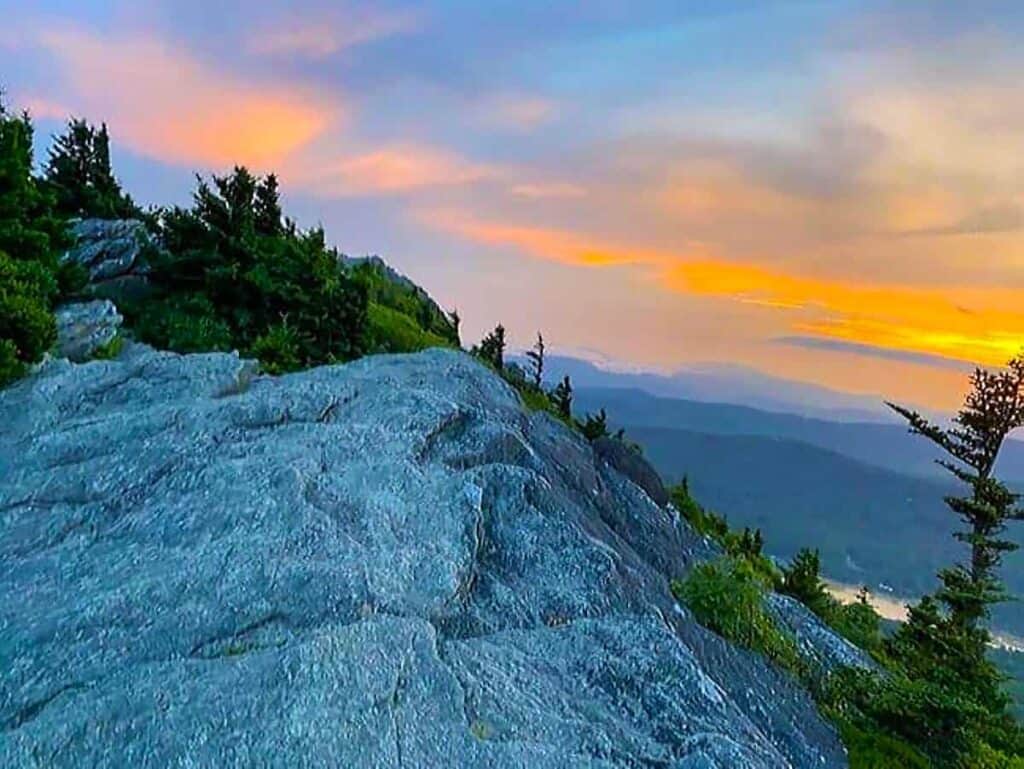
Final Thoughts: RV Road Trip to All Georgia National Park Sites: Our Travel Guide
Georgia’s national park units offer a stunning variety of landscapes—from rugged mountains and historic forts to sacred indigenous sites and serene coastlines. With our RV motorhome, we were able to seamlessly connect these diverse treasures into one incredible road trip.
If you’re craving a blend of history, natural beauty, and adventure, we can’t recommend a Georgia National Park road trip enough. And don’t forget: bringing your RV adds an extra layer of freedom and comfort, making it the perfect way to explore this beautiful state.
We’d love to hear about your own Georgia road trip experiences! Feel free to drop a comment below and share your thoughts or any tips you have for fellow travelers.

